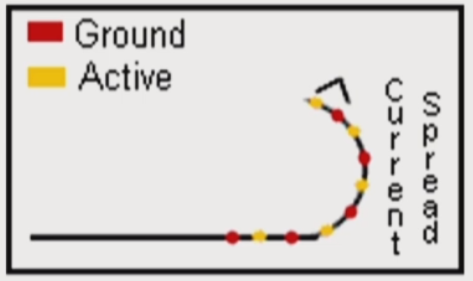[NPE] Cochlear implant – Electrode
Elements and functions they replace
1. Sound collection & mechanical amplification
- microphone, automatic gain control
2. Tonotopy of basilar membrane
- Bandpass filter array(filter bank)
- Fast Fourier Transform
3. Damaged inner hair cells
- Multichannel elctrode sites
4. Auditory nerve activation by neurotransmitter release(chemical link)
- Electrical stimulation of the auditory nerve (electraical link)
![]()
1. Microphone
![]()
directional, 방향성이 있는 microphone을 사용한다.
- Requirements of good miucrophone
- Broad frequency response
- minimize response to low-frequency vibrations (ex. head movement, walking)
- good performance under adverse condition (ex. cafeteria noise)
- How to address adverse condition?
- Directional microphone
- Multiple microphone
- selectivity of the directional pattern is increased compared to single microphone
- Sounds originating between and in front of microphones are emphasized, otherwise suppressed
- SNR improved
2. Cochlear Electrode Array
![]()
Scala Tympani(ST)에 공간이 있기 때문에 이곳에 cochlear electrode를 삽입할 수 있다.
![]()
▲ 오른쪽 그림에서 11개의 전극이 삽입되어 있는 것을 확인할 수 있다.
Requirements for cochlear electrode
- biocompatible: remain over lifespan
- mechanically stable
- facilitate atraumatic insertion
- flexible arrays, narrow cross-sectional area
- use lubricant (ex. hyaluronic acid)
- good spatial specificity of stimulation
Insertion trauma
Insertion force & Extraction force
- More force is needed to advance in to the ST
Insertion trauma
- Sharp edge or stiffness of the electrode may cause damages to surrounding tissues.
Insertion trauma grading
- 0: No observable trauma
- 1: elevation of BM
- 2: rupture of BM
- 3: electrode in scala vestibuli
- 4: fracture of osseous spiral lamina or modiolar wall
Multi channel, it should be
![]()
Spatial specificity of stimulation depends on..
- Whether neural processes peripheral to the ganglion cells are present or not
- The number and distribution of surviving ganglion cells
- The proximity of the electrodes to the target neurons
- The electorde coupling configuration (monopolar, bipolar)
![]()
8개의 채널만으로도 충분한 성능을 낼 수 있다.
Pre-curved vs. Straight
Straight types
- deep insertion
- far from target cells
- lateral wall insertion
Pre-curved types
- close to target cells
- using stylet(safety problem)
- perimodiolar insertion
잘 십입되었을 경우 Pre-curved type이 더 성능이 좋다. Target cell에도 가깝고, modiolus에도 가깝게 위치시킬 수 있기 때문이다.
Peri-modiolar placement
Positioning of electrodes in ST
Place close to inner wall of ST to minimize the distance between electrodes and SG
- maximize the number of largely non-overlapping popuiations of neurons
- imporve spatial specificity of stimulation
- reduce threshold voltage
- increase battery life

Making entry to cochlea
![]()
-
Cochleostomy approach
- straight entry
- relatively deep insertion depth
- hard to drill
- damaging to HC
-
Round window approach
- using natural window
- curved entry
- relatively shallow insertion depth
- less drilling necessary
- saving residual HCs
- used in EAS(Combined electric and acoustic stimulation) : 전기자극과 함께 residual hair cell을 통해 음성신호도 전달할 수 있다.
Electrode Length
- Electrical only (Long)
- deep insertion
- apex stimulation (low frequency)
- high insertion trauma
- Combined electrical acoustic stimulation (Short)
- acoustic + eletrical
- low insertion trauma
We wish we could do better in positioning
Limitation in positioning of electrodes
- SG is the target
- Inner wall of ST is not always close to SG
- SG has
1.75turns while ST has2.5turns - Distance between the innser wall of the ST and SG increases with increasing distance from the round window(toward the apex)